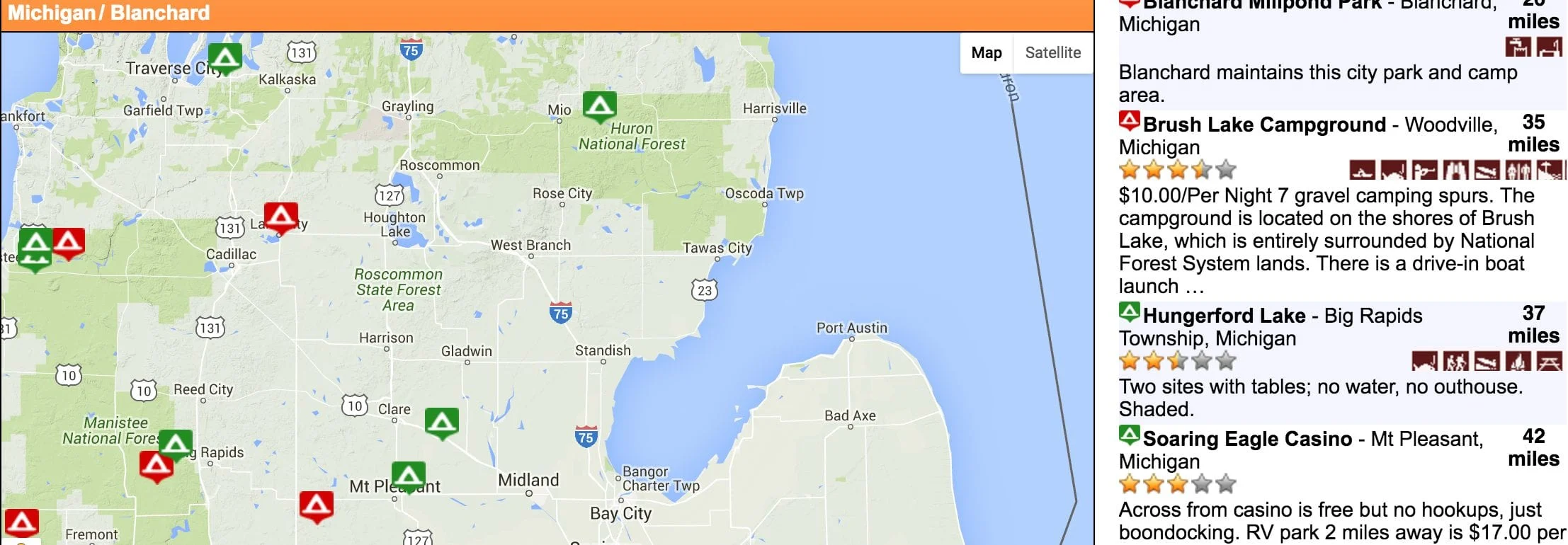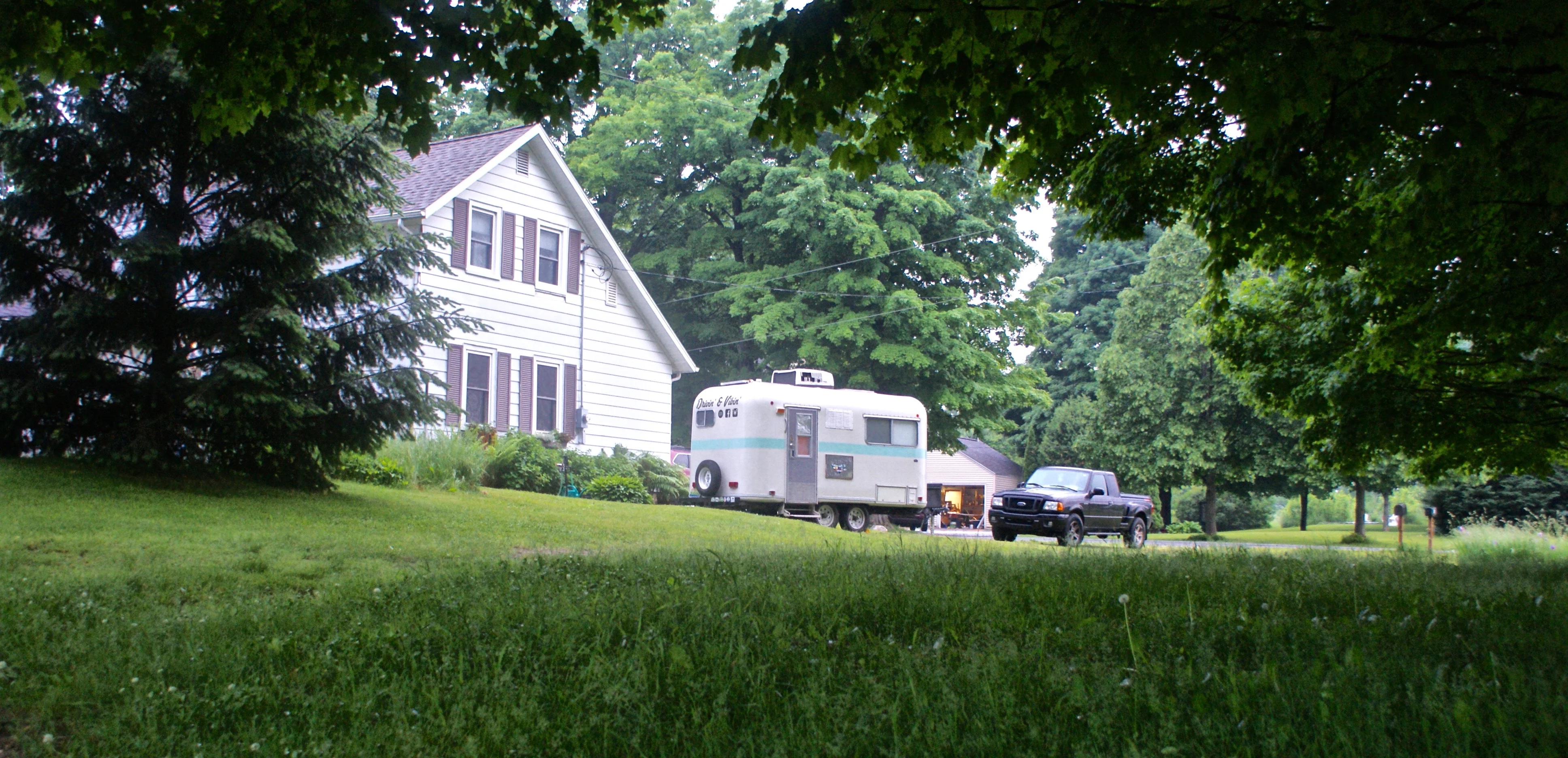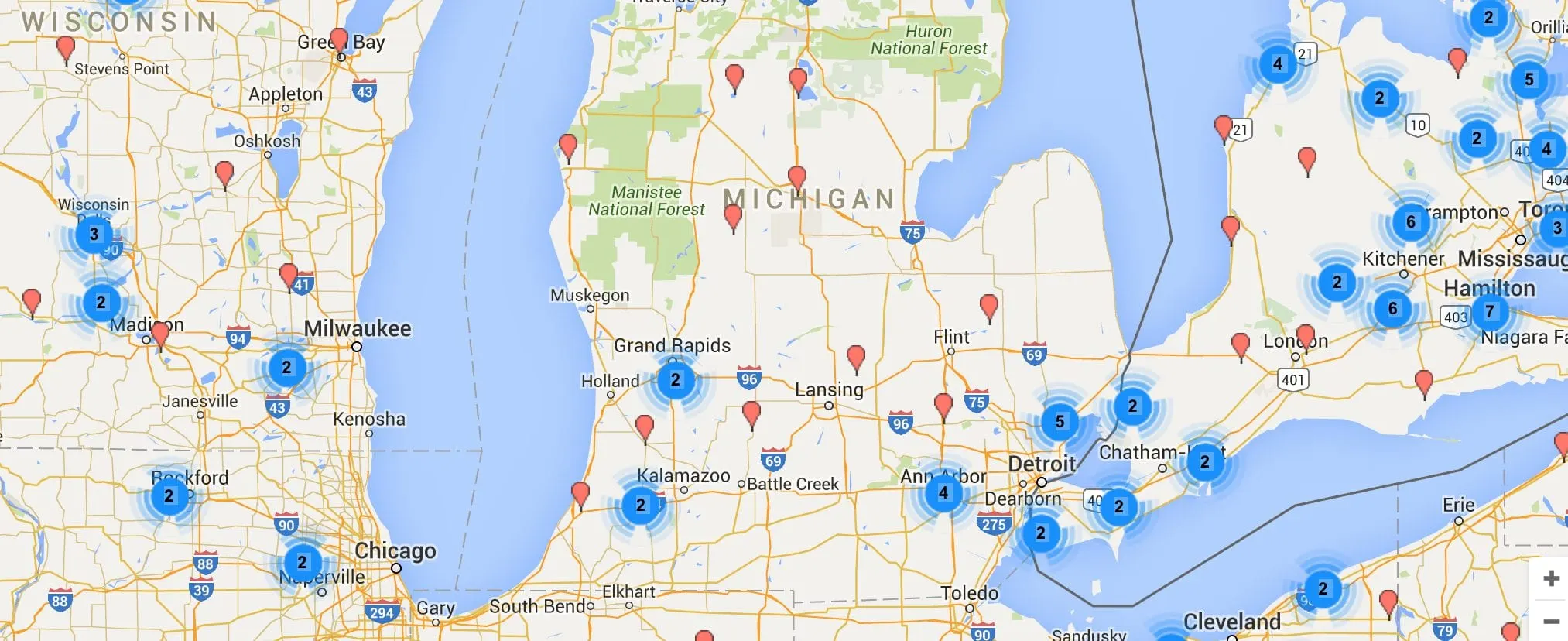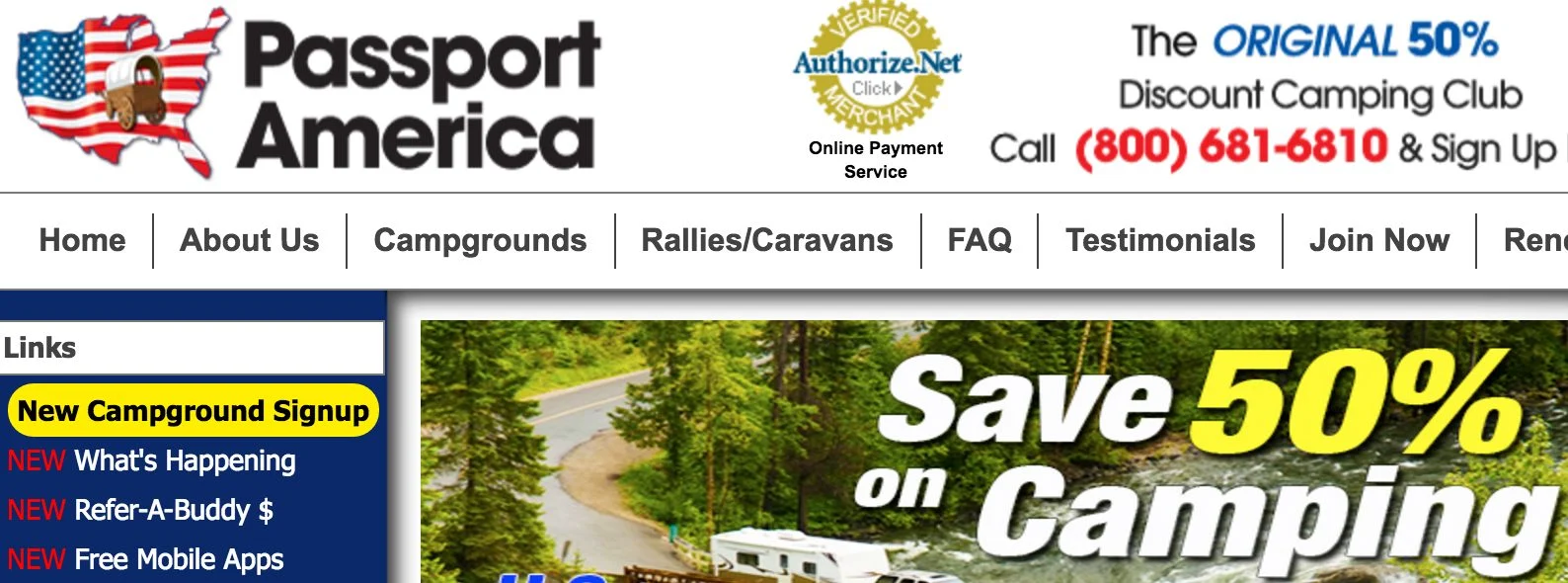As full-time-traveling RVers on a budget, we’ve found that RV park fees can be a financial drain. And, all too often, the experience lacks nature and character. In this article, we’ll share the methods and tools we use to find free (or cheap) camping that also inspires the soul!
There’s no such thing as a free campsite.
The adage remains true, and there is an expense associated with free camping.
Most free camping opportunities don’t have hookups. This means you’ll have to produce energy, supply water, and contain waste. Be prepared – modifying your RV for dry camping can lead to a few upfront investments.
Our free camping methods also include membership programs, costing us about $100 yearly in fees.
The Basics
BLM land is amazing. It stands for Bureau of Land Management and is generally a large expanse of nature with little to no developments. On BLM land, you’ll find primitive sites, possibly with a fire ring, or you can (sometimes) create your own site. However, it’s important to leave no trace.
There’s no comprehensive list of BLM land, but some ever-growing websites help us find great spots.
Free Campsites dot Net

This is our go-to when hunting BLM land. It’s a huge, user-generated database of free campsites and is moderated for quality assurance.
Pros: It’s the largest collection of sites, with an active community reviewing the grounds.
Cons: The website’s design feels “outdated,” and sometimes, the reviews are short and vague.
Campendium

Campendium is much newer than freecampsites and doesn’t currently compete with its database. It’s also littered with many paid campsites. However, the community comprises full-time RV travelers and provides amazing, in-depth reviews.
Pros: The website is sleek & modern, and the reviews are amazing. They include cell service ratings for each site and allow contributors to link corresponding blog posts.
Cons: To receive total access, you must create an account. It’s not a huge deal, but it annoyed me at first.
Allstays App for iPhone

This app costs $9.95, but it’s well worth it. AllStays provides a user-friendly map with the most comprehensive camping options. It includes free campsites, paid campsites, state & national parks, rest areas, truck stops, overnight parking, and more.
Don’t let all those options intimidate you – the app’s filtering capabilities are on point. We can search for free camping on a road with little elevation change, overnight camping near a dump station, and thousands of other filtering combinations.
Pros: So much great information!
Cons: An initial investment of ten bucks.
Membership Programs for Free Camping
Paying a membership fee for free camping seems counter-intuitive, but these are a few of the programs that have saved us lots of money.
Harvest Hosts

Harvest Hosts provides a collection of farm, vineyards, and museums that allow members to camp on their property for a night or two free of charge. We enjoy these spots, not only for the price, but because they offer unique experiences.
We’ve camped at a honey farm, vineyard, and organic soapworks farm.
The membership costs $44 a year.
Boondockers Welcome

Boondockers Welcome is a yard-share program. Members across the nation allow RVers to boondock on their property. Every member has different rules for length of stay, allowing pets, and using generators. However, some members offer water & electricity free of charge.
Get Creative
When you want to camp at a location that doesn’t offer free camping options, get creative! Research local campgrounds, find the ones that click with your style, and call them up to offer your services.
Do you create websites, do handy work, or offer any other skills? Let them know you’ll be in the area for a week and offer a trade of services.
Putting yourself out there to be rejected feels a little vulnerable, but the payoff is great. With every “yes” received, confidence is gained, and camping is free!
When You Must Pay
There are many times when we have to, or even want to, pay for camping. Doing laundry, taking a long hot shower, dumping our tanks, or visiting a specific area are all reasons we pay to camp.
Passport America

Our Passport America membership has saved us more money than all of our memberships combined. It offers a huge network of campgrounds that offer members half-price camping.
We soaked in hot springs at high-end RV resorts for half the price – saving over $300 in just two weeks.
There are rules for use specific to each campground, but for travelers with a loose schedule, these rules haven’t been limiting.
Overall…
Life on the road is full of energy & thoughtfulness, and we learn more about ourselves daily. We’ve discovered that refining our methods and focusing positive energy on our objectives leads to great results. This is true even when it comes to finding free camping.
Failure is the best teacher, so don’t get too discouraged. We’ve pulled into many free campsites that were total busts and left us scurrying late in the afternoon to find a spot to sleep.
See y’all out on the open road!
Discover the Best Free Camping Across the USA
To be honest with you, we hate paying for camping. There are so many free campsites in America (with complete privacy).
You should give it a try!
As a matter of fact, these free campsites are yours. Every time you pay federal taxes, you’re contributing to these lands.
Become a FREE CAMPING INSIDER and join the 100,000 campers who love to score the best site!
We’ll send you the 50 Best Free Campsites in the USA (one per state). Access the list by submitting your email below:
Thank you for this info. Really helps.
Great article. And how fun to take a listen to your music. Great job.